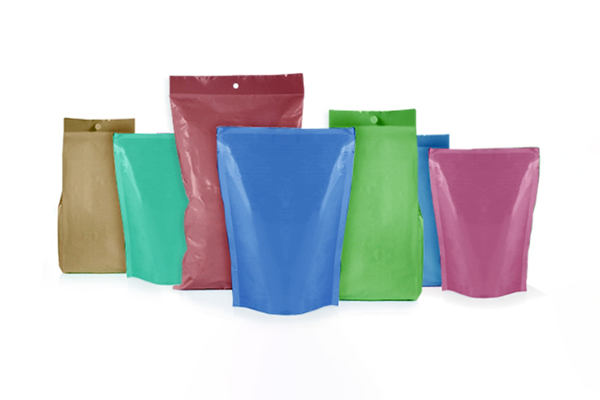Flexible packaging is a term that has gained significant attention in the packaging industry over the past few decades. As consumer preferences shift toward more convenient and sustainable options, the demand for flexible packaging has surged. But what exactly does “flexible packaging” mean, and why is it becoming so popular? This article delves into the concept of flexible packaging, its benefits, and its growing importance in the modern market.
Defining Flexible Packaging
Flexible packaging refers to a type of packaging made from flexible or easily yielding materials that can be molded into various shapes. Unlike rigid packaging, such as glass jars or metal cans, flexible packaging materials include plastic films, foils, paper, and laminates. These materials can be easily shaped to accommodate the product inside, making them versatile and functional for a wide range of applications.
Key Characteristics of Flexible Packaging:
- Versatility: Flexible packaging is incredibly versatile and can be designed to fit products of almost any shape and size. This adaptability makes it ideal for packaging everything from food items to pharmaceuticals and consumer goods.
- Lightweight: One of the standout features of flexible packaging is its lightweight nature. This characteristic reduces transportation costs and the carbon footprint associated with shipping products, making it an eco-friendly choice.
- Durability: Despite its lightweight nature, flexible packaging is remarkably durable and offers excellent protection against moisture, UV light, and other environmental factors. This durability ensures that products remain fresh and intact during storage and transit.
- Customization: Flexible packaging can be easily customized with various printing techniques, allowing brands to create eye-catching designs and packaging that stands out on the shelf. The ability to print high-quality graphics directly onto the packaging is a significant advantage in marketing and branding.
Types of Flexible Packaging
Flexible packaging comes in many forms, each suited to different applications. Some common types include:
- Pouches: Pouches are one of the most popular forms of flexible packaging. They can be stand-up or flat and are often used for snacks, beverages, and ready-to-eat meals. Pouches are known for their resealable options, which help in maintaining product freshness.
- Bags: Flexible bags are commonly used for products like coffee, pet food, and baked goods. They can be produced in various sizes and can be equipped with features like zippers, spouts, or handles for added convenience.
- Films: Films are thin layers of plastic or other materials used to wrap products or create bags. They are often used in conjunction with other packaging materials to provide an additional layer of protection or to enhance the product’s appearance.
- Shrink Wraps: Shrink wraps are plastic films that shrink tightly around a product when heat is applied. This type of flexible packaging is commonly used for bundling products together or providing an extra layer of security and protection.
- Laminates: Laminated flexible packaging is made by bonding multiple layers of materials together. This method enhances the packaging’s strength, barrier properties, and appearance, making it suitable for packaging products that require a higher level of protection.
Advantages of Flexible Packaging
The rise of flexible packaging is largely due to the numerous advantages it offers over traditional rigid packaging:
- Sustainability: Flexible packaging typically uses fewer materials than rigid packaging, resulting in less waste and a smaller environmental impact. Many flexible packaging options are also recyclable or made from renewable resources.
- Cost-Efficiency: The lightweight nature of flexible packaging reduces shipping costs, and the materials used are often more cost-effective than rigid alternatives. Additionally, the efficient use of materials leads to lower production costs.
- Extended Shelf Life: Flexible packaging provides excellent barrier properties, protecting products from moisture, oxygen, and contaminants. This protection extends the shelf life of perishable goods, reducing food waste and improving product safety.
- Convenience: Flexible packaging is designed with the consumer in mind, offering features like resealable zippers, easy-open seals, and pour spouts. These convenience features make the packaging user-friendly and enhance the overall consumer experience.
- Space-Saving: Flexible packaging is compact and takes up less space on shelves and in storage, which is a significant advantage for both retailers and consumers. This space efficiency also contributes to reduced transportation and storage costs.
Challenges and Considerations
While flexible packaging has many benefits, it is not without its challenges. One of the primary concerns is the recycling and disposal of flexible packaging materials. Unlike rigid plastics, which are often easier to recycle, flexible packaging requires specialized recycling processes that are not always available. However, the industry is making strides in developing more recyclable materials and improving the sustainability of flexible packaging.
Another consideration is the perception of flexible packaging as being less durable or protective compared to rigid options. However, advancements in material science and packaging technology have significantly improved the strength and barrier properties of flexible packaging, making it a viable alternative for many applications.
Conclusion
Flexible packaging represents a modern, innovative approach to packaging that aligns with current consumer demands for convenience, sustainability, and cost-efficiency. Its ability to adapt to various products, coupled with its numerous benefits, makes it a preferred choice for manufacturers and consumers alike. As technology continues to evolve, flexible packaging is likely to become even more versatile, sustainable, and integral to the future of packaging solutions.
Post time: 09-06-2024


